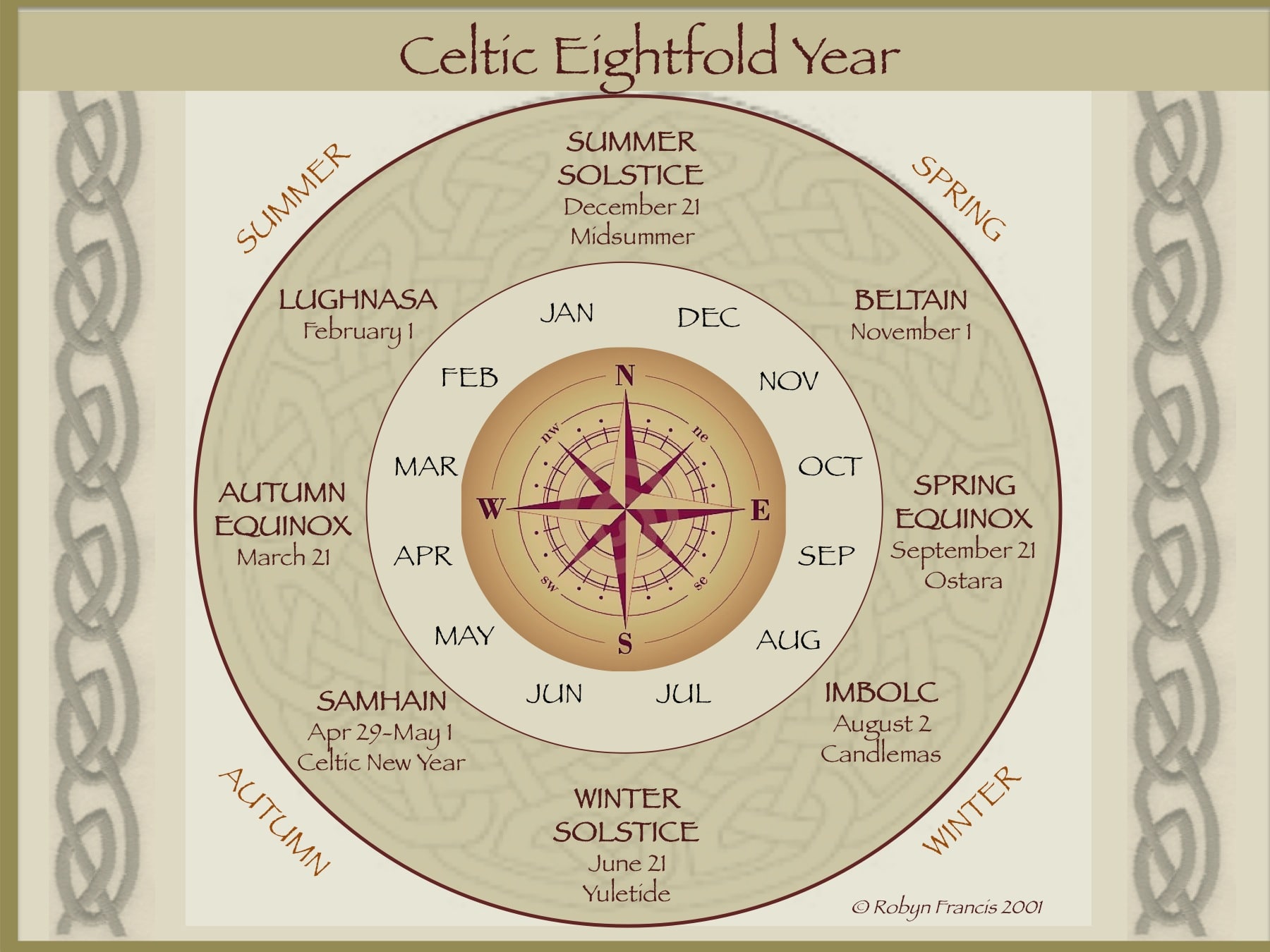In Celtic philosophy, the macrocosm is reflected in the microcosm, everything cycles, and there are cycles within cycles– the times of day, annual seasonality of the earth, stages of the human lifecycle, to astronomical cycles of sun and moon spanning decades and longer time frames.
The diagram below maps some of these cycles and their relationships to common underpinning patterns.

Things New Begin in Darkness
All things new begin in darkness. The darkness, symbolized by the empty cauldron, provides a period of preparation and letting go of things from the past which might impede new growth.
The creation began with the darkness and then there was light.
The Celtic day ends with sunset and the ‘new day’ commences with fall of darkness, the eve of the day to come, tomorrow’s eve. The sun sets, daylight fades, darkness settles in, and we sleep and dream in preparation for the new day. The eve-of-the-day-to-come concept has filtered through the millennia through several celebrations such as Christmas Eve and New Year’s Eve.
Following the same cyclic pattern, just as the new day begins with the darkness of nightfall, so the Celtic year begins with the onset of the darkest time of year at Samhain. The human lifecycle starts and ends with darkness, it starts with conception in the darkness of the womb and is born into the light and ends with the darkness of death and transition to the ‘otherworld’.
The Human Life Cycle
The Eight Stations of the Year relate to the following stages of the human lifecycle:
Winter Solstice is Conception and the beginning, or spark, of new life growing in the darkness of the womb
Imbolc is Childbirth and Infancy, coming from the darkness of the womb into the light of day and the outside world. This season symbolises the period of early infancy and dependency where the home and immediate family are of greatest importance in nurturing and childraising.
Spring Equinox represents childhood as the period a child gains more independence from it’s immediate family and begins learning from others e.g. starting school
Beltaine symbolizes Youth, puberty, coming of age, the transition from childhood to adulthood, of learning one’s trade, secondary and tertiary education and apprenticeships.
Summer Solstice is Adulthood, coming into one’s occupation and mastery of skills, a time for childraising, home-making, establishing a business, of being a fully responsible adult in society. It also symbolises succession, passing knowledge and responsibilities from one generation to the next.
Lughnassah indicates Maturity, the time of experience and mastery, of reaping the rewards of one’s life work, mentoring and teaching others
Autumn Equinox represents Eldership and the wisdom of old age
Samhain symbolises Death, the transition into the afterlife or time between lives
Examples of other Cycles
There were many other cycles recognized in Celtic philosophy and astronomy. Time itself was seen as cyclic. There were 3 cycles of three years creating a 9-year cycle, and 3 cycles of these 9-year cycles.
The number 3 features in much of Celtic art and philosophy: the three realms of land air and water; the 3 aspects of the goddess as virgin, mother, crone are just a few examples.
The druids also observed the cycles of the moon in relationship sun, which were calculated on an 18.6 year cycle.



I’m not sure where you’re getting your information, but great topic.
I needs to spend some time learning more or understanding more.
Thanks for wonderful information I was looking for this info for my mission.